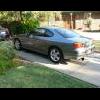Wastegate Actuator Mod
Announcements
-
Similar Content
-
Latest Posts
-
majority aftermarket is an10 yes, but majority of OEM is An12 r35 OEM cooler lines at close to an 12, the hard line that car uses is almost 20mm Porsche OEM is also AN12 i figure, if our power levels are close to 1000hp, then AN12 should be a must if many OEM standard power vehicles use AN12
-
By Dose Pipe Sutututu · Posted
Have a read of this: https://www.energy.nsw.gov.au/households/rebates-grants-and-schemes/household-energy-saving-upgrades/connect-your-battery-virtual Just one thing, your battery setup also must be supported by the retailer, at the moment for Fox Ess, only Amber supports it however that should expand with time. -
By Murray_Calavera · Posted
I've never heard of this before, how does it work?
-






Recommended Posts
Create an account or sign in to comment
You need to be a member in order to leave a comment
Create an account
Sign up for a new account in our community. It's easy!
Register a new accountSign in
Already have an account? Sign in here.
Sign In Now